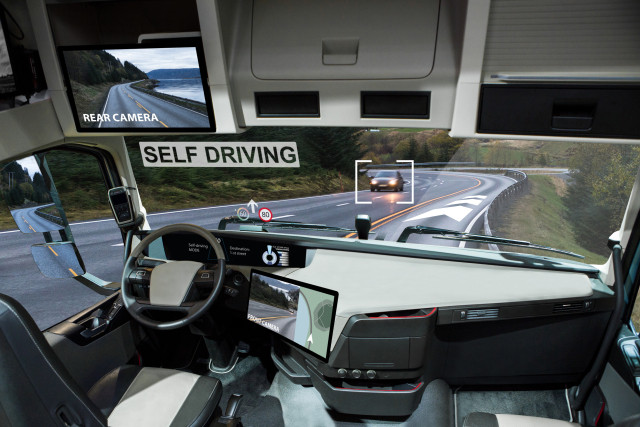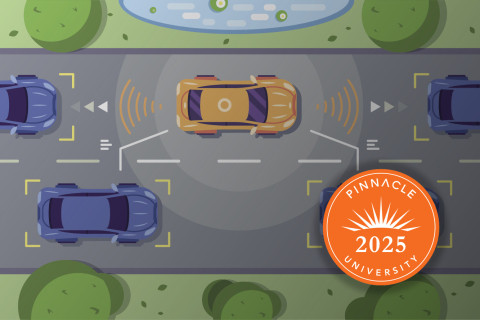
Focused on Insurtech: Don’t Miss the Bigger Picture
Per the Google Chrome Dictionary:
obsolete
- adj. no longer produced or used; out of date.
- v. to cause a product or idea to be or become obsolete by replacing it with something new.
The insurance industry seems obsessed with insurtech. Every insurance news feed, webinar, magazine and website is filled with the latest and greatest insurtech news. Insurers are both enamored by insurtech’s potential and concerned by its ability to disrupt the status quo. And why not? Despite the fact that the National Association of Insurance Commissioners (NAIC) thinks insurtech is “still in its infancy,”1 technology reshaping the glacially-paced insurance industry is nothing new. In the last thirty years, the insurance industry has been materially impacted by innovative technologies like:
- Progressive’s predictive analytics applications, including the use of credit, driving record and other factors
- Esurance’s virtual insurance company
- Telematics to introduce usage-based insurance (UBI) and driver behavior-based rating
- Online insurance quoting tools that return premium quotes in fifteen minutes or less
All of these technologies caught the traditional insurance markets flat-footed and led to material shifts in market share, insurance company financial statements and company operations.
Insurtech refers to “the use of technology innovations designed to squeeze out savings and efficiency from the current insurance industry model. The belief driving insurtech companies is that the insurance industry is ripe for innovation and disruption. Insurtech is exploring avenues that large insurance firms have less incentive to exploit, such as offering ultra-customized policies, social insurance, and using new streams of data from internet-enabled devices to dynamically price premiums according to observed behavior.”2
Emerging insurtech encompasses a range of both technologies and solutions to a wide array of problems. Examples include: enhanced pricing models, virtual insurance companies, on-demand/usagebased/micro insurance, parametric insurance, risk management, artificial intelligence (AI), peer-topeer (P2P) insurance, new devices and (distribution) channels, blockchain and insurance-specific devices (wearables, telematics, IoT).3
The three largest insurtech companies in the US according to website traffic were Lemonade, a socially-conscious, P2P residential insurer, Metromile, a usage-based personal auto insurer, and Oscar, an innovative health insurer with substantial backing from Alphabet (Google) among others.4 There are numerous price-comparison insurtechs, such as Insureon, Everquote and The Zebra. The on-demand insurance sector also features specialty coverage such as drone insurance from Verifly, trip cancellation from Etherisc, and event insurance from Tulip. Some insurtech programs are starting to feature the use of blockchain technology and cryptocurrency like Ethereum. AI systems are also gaining momentum as tools for primary and reinsurance underwriting, claims handling procedures and even actuarial science.5
Many insurance company executives remember the impact Progressive, GEICO, Esurance and others’ insurtech had on personal insurance market shares and are focused on avoiding a repeat of the same mistake. As a result, many leading global insurers have made substantial investments in insurtech-focused technology incubators in the hopes they can be owners, or at least early adopters, of the next big insurtech innovation. Examples include:
- Munich Re has formed MundiLab, a Berlinbased insurtech incubator
- John Hancock has formed LOFT, the Lab of Forward Thinking, initially investigating opportunities in blockchain
- Plug and Play, a global insurtech incubator, has corporate partners including Allianz, Maiden Re, Nationwide, State Farm, Swiss Re, Travelers, USAA and others
- Global Insurance Accelerator has backing from Allstate, Delta Dental, EMC, Farm Bureau Financial Services, Mutual of Omaha, Principal, WR Berkley and others
The substantial backing technology incubators are receiving from a large number of leading insurers speaks to the size of the perceived opportunity.
However, there is a much larger technological revolution occurring that cannot be ignored. Disruptive innovation is fundamentally changing the industries we insure and their risk profiles. These innovations create new risks, mitigate or completely eliminate current risks and lead to the obsolescence of both jobs and companies, as well as the ascendance of new careers and organizations. Captives are uniquely qualified to help businesses respond to the opportunities these dynamic environments present.
Let’s start by defining the term. A disruptive innovation “is an innovation that creates a new market and value network and eventually disrupts an existing market and value network, displacing established market-leading firms, products and alliances.”6 Recent examples include Amazon, AirBnB, Apple, Bitcoin, Uber, SpaceX, and Tesla. Each of these companies has taken on well-established industries, including banking, communications, energy, hotels, music, retail and wholesale, satellite delivery and transportation (and seemingly more everyday), and redefines the rules of play and basic economics.
But how does innovation impact risk and insurance? Let’s look at some examples. In the US, non-fatal occupational injuries and illnesses have dropped from 5 claims per 100 full-time equivalent workers in 2003 to 2.9 claims in 2016.7 There were 15,000 medical malpractice claims against physicians (MDs and DOs) in 2003. By 2015, this number had dropped below 8,600.8 Technology has contributed to both of these substantive trends in a wide variety of ways, ranging from data analytics to improved medical technology to the introduction of all manners of sensors and monitors.
The future opportunities for disruptive technology to dramatically reduce risk are equally powerful. In healthcare, where errors in diagnosis are involved in almost 30% of all medical professional liability cases,9 AI systems are beginning to outperform physicians.10 There are also robots capable of drawing blood11 and flawlessly performing simple surgeries (e.g. stitches for superficial wounds).12 In the automobile industry, where the National Highway Traffic Safety Administration (NHTSA) finds the driver to be the critical factor in 94% of all crashes,13 autonomous vehicles continue to become closer to a practical reality.
None of these innovations come without new risks. Does moving from a national power grid based largely on fossil fuels to a more localized power source with greater reliance on renewable energy result in localized power outages? Can autonomous vehicles be hacked or compromised by solar flares? With human gene editing using CRISPR14 now a reality, how long before this technology is abused? The same applies to medical nanotechnology. Clearly, disruptive innovation is not without risk. The challenge is having the creativity and risk appetite to take on both the substantial changes in existing risks (sometimes unprecedented reductions) and the new technology’s unknown risks.
One thing is clear: Disruptive innovation impacts employment. Throughout history, disruptive innovation has had two impacts on society. It has periodically displaced elements of the workforce which must seek employment elsewhere. However, disruptive innovation also leads to better and less expensive goods and services over time. But in spite of all of the benefits we are realizing today, can society continue to keep up with the current pace of innovation?
An Oxford University research study entitled “The Future of Employment: How Susceptible are Jobs to Computerization?”15 paints a challenging picture. Performing an analysis based on the key requirements of over 700 jobs based on US Department of Labor data, the study found “47 percent of total US employment is in the high-risk category, meaning that associated occupations are potentially automatable over some unspecified number of years, perhaps a decade or two.” It found that not only were jobs with rote manual activities (e.g. fast-food cooks, crop harvesting, shelf stocking) susceptible to computerization, but so were jobs with a lot of cognitively-rote activities (e.g. tax preparers, data entry, legal assistants). In fact, the news for several insurance-related jobs was quite dire, with multiple occupations having high likelihoods of being computerizable, including:
- Mathematical technicians (99%)
- Insurance underwriters (99%)
- Data-entry keyers (99%)
- Insurance claims and processing clerks (99%)
- Insurance appraisers-auto damage (98%)
- Claims adjusters, examiners and investigators (98%)
- Legal secretaries (98%)
- Office clerks (96%)
- Receptionists and information clerks (96%)
- Paralegals (95%)
- Accountants and auditors (94%)
Is it any wonder insurtech companies believe the insurance industry is ripe for innovation?
So what does the future hold? As I mentioned earlier, insurtech is nothing new. Neither is disruptive innovation. The memories of ice delivery men, telegraph operators and lamp lighters all testify to innovations of times past. In fact, today’s innovators (e.g. Amazon) are sometimes disrupting a previous era’s innovator (e.g. Sears, whose catalog was revolutionary in its day). Amazon even incorporates the need to be constantly innovating into its culture with the idea that “every day is day one,” because on day two you begin to atrophy and the next innovation is on its way to replace you. The question is, which insurers and captive programs will we look back on in ten years as the Amazons of their day, and which will be the Sears?
1 www.naic.org/cipr_topics/topic_insurtech.htm
2 www.investopedia.com/terms/i/insurtech.asp#ixzz5An7j4f2u
3 Based on information from www.thefinancialbrand.com/62732/insurance-technology-insurtech-trends/ et al.
4 www.boughtbymany.com/news/article/insurtech-companies-to-watch-website-traffic/
5 www.ey.com/us/en/industries/financial-services/insurance/ey-robots-join-the-team
6 en.wikipedia.org/wiki/Disruptive innovation
7 2016 Survey of Occupational Injuries and Illnesses, US Bureau of Labor Statistics www.bls.gov/iif/osch0060.pdf
8 truecostofhealthcare.org/malpractice statistics/
9 www.amednews.com/article/20130506/profession/130509971/4/
10 www.sciencemag.org/news/2017/04/self-taught-artificial-intelligence-beats-doctors-predicting-heart-attacks
11 www.veebot.com/solutions.html
12 www.businessinsider.com/robotic-surgery-da-vinci-system-stitches-peeled-grape-fruit-intricate-2017-4
13 crashstats.nhtsa.dot.gov/Api/Public/ViewPublication/812115
14 www.qz.com/1185488/chinese-scientists-used-crispr-gene-editing-on-86-human-patients
15 www.oxfordmartin.ox.ac.uk/downloads/academic/The_Future_of_Employment.pdf



